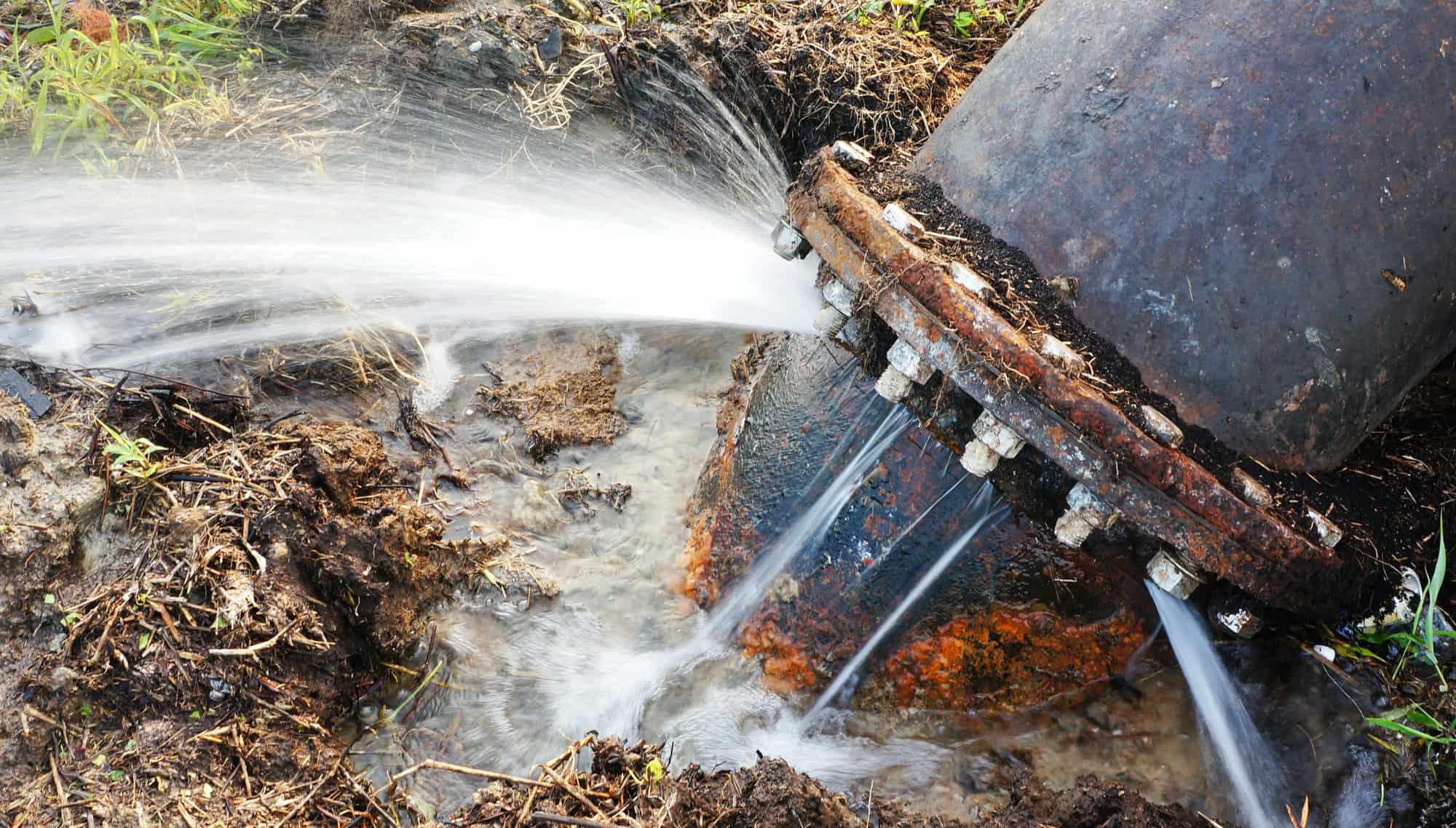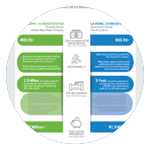Protecting the Failing Status Quo Discover the Truth About Critics’ “Solutions” to Local Infrastructure Needs

Across the US, communities face real challenges as a result of aging water infrastructure. Too much of our country’s infrastructure is outdated, overused and underserviced. In America, there are 240,000 water main breaks each year, and we lose 16% of our treated water before it even reaches the customer. The EPA estimates that drinking water systems alone will require $1 trillion in infrastructure upgrades over the next 25 years.1
This is a serious issue, and we need serious solutions.
Water companies offer critical solutions for meeting our infrastructure challenges – something that has been recognized by everyone from the US Conference of Mayors and the Brookings Institute to the White House and EPA. Unfortunately, there are ideological opposition groups that blindly reject all private sector support for water systems, and their misinformation campaigns deny cities and towns practical options for meeting water and wastewater needs.2
These ideological opposition groups oppose common sense, bipartisan solutions without offering realistic alternatives.
- Opponents believe increased federal government spending is the only solution
These groups often argue that all municipal water needs can and should be met solely through increased annually federal spending, despite the fact that US drinking water systems face a massive $600 billion investment gap over the next 20 years. Meeting this investment need through the federal government alone would require an enormous 1,100% increase in annual federal spending on water infrastructure. Experts note that the 2021 Infrastructure Investment and Jobs Act funding for water infrastructure is significant but far short of what’s required, representing just 10% of the total investment requirement for drinking water alone.3 - Opponents blindly support condemnation or remunicipalization efforts even when they may do more harm than good for local communities
For example, in Felton, CA, water rates have effectively doubled since the city took back operation of the system from a water company. That’s in addition to the $535 bond tax Felton each household will pay annually for 30 years to finance the water system purchase. In Edison, NJ, an activist misinformation campaign convinced voters to force government operation of the water utility, leading to massive rate increases, utility staffing shortages, and deferred infrastructure upgrades.4 - Opponents reject solutions offered by water companies even when a community is not interested in owning or operating its water systems
These ideological groups believe drinking water and wastewater services should be provided by the government, in all cases and without exception – even when a local government does not want to be responsible for providing those services or has proven incapable of providing those services.
Groups that blindly oppose water company solutions do not consider the facts or the specific water infrastructure needs of a community. Rather, they are ideologically opposed to any private sector support for community water systems. Communities need real answers for their pressing water challenges, not blind opposition to proven solutions.
Instead of limiting options available to municipalities facing serious and urgent water system challenges, the following policy proposals would actually help address our nation’s infrastructure crisis:
- Consolidation through Partnerships
There are currently more than 52,000 water systems in the United States, and more than half of these systems serve fewer than 500 people. These small systems struggle with shrinking budgets, a lack of technical and managerial expertise, and aging infrastructure. Supporting and incentivizing partnerships or regional consolidations among water systems can expand small utilities’ operational efficiencies, provide access to capital for infrastructure upgrades, bring much needed technical expertise to the system, better compliance with complex state and federal regulation, and improve customer satisfaction. Congress is considering legislation which would enable struggling water systems to voluntarily merge or contract utility operations with a nearby healthy system to help improve water quality compliance.5 - Affordability
For 40 years now, there has been a federal program in place to aid low-income Americans who are unable to pay their home energy utility bills. NAWC supports a similar federal program to help those who struggle to pay their water bills. NAWC member companies have long offered customer assistance programs and options to help low-income customers pay water bills and avoid water shutoffs. The creation of a federal customer support program for basic water needs would provide a strategic safety net to ensure water keeps flowing to all households in America. - Private Activity Bonds and Revolving Funds
Encouraging regionalization in the water sector through the clean water and drinking water state revolving fund programs, lifting the cap on private activity bonds, and expanding eligibility of the Clean Water State Revolving Fund to all water service providers, could all stimulate private sector investment in infrastructure, according research conducted by PwC. Their study found that these changes could lead to an additional $58-$68 billion in incremental private water and wastewater infrastructure investments.6
Sources:
- Water Research Foundation, “Main Breaks: State of the Science” Feb. 2015; Naval Postgraduate School Center for Homeland Defense and Security, “America’s Infrastructure: Where Are We Headed?” March 2009; AWWA, “Buried No Longer: Confronting America's Water Infrastructure Challenge” Feb. 2012
- U.S. Conference of Mayors Urban Water Council, “Mayor’s Guide to Water and Wastewater Partnership Service Agreements,” Apr. 2005. Brookings Institute and Rockefeller Foundation, Project on State and Metropolitan Innovation “Moving Forward on Public Private Partnerships,” Dec. 2011; EPA Response to Congress on Privatization of Wastewater Facilities, 1997; Brookings Institute, “Public-Private Partnerships to Revamp U.S. Infrastructure,” Feb. 2011; The President’s National Infrastructure Advisory Council, “Preparing United States Critical Infrastructure for Today’s Evolving Water Crises” September 2023.
- U.S. EPA Water Infrastructure and Resiliency Finance Center, Accessed 6/30/16; U.S. EPA, "Drinking Water State Revolving Funds: 2017 - 2020 Allotment of Federal Funds for States, Tribes, and Territories"; U.S. EPA, "FY 2019 Clean Water State Revolving Fund Final Allotments" April 2019; Manny Teodoro, “The Revolution Will Not be Legislated” February 2022
- For more, see: “CONDEMNATION CASE STUDY: A RECORD OF BROKEN PROMISES IN FELTON, CALIFORNIA” and “WHERE ARE THEY NOW? FIVE EXAMPLES OF ACTIVISTS MISLEADING COMMUNITIES ON MAJOR WATER DECISIONS” under “How Opponents Get It Wrong”
- Brookings Institution, “America’s Fragmented Water Systems” 10/16/14; Manny Teodoro, “The Plan: A five-point proposal to transform the U.S. water sector” 10/15/19; RAND Corporation, “How to Ensure Quality Drinking Water Service for All? One Option Is Fewer Utilities” 3/26/19; Manny Teodoro, “Grow to Shrink, Shrink to Grow” 6/27/19;
- PricewaterhouseCoopers via NAWC, “New Report Identifies Ways to Unlock Much-Needed Investment in U.S. Water Infrastructure” Oct. 2011










